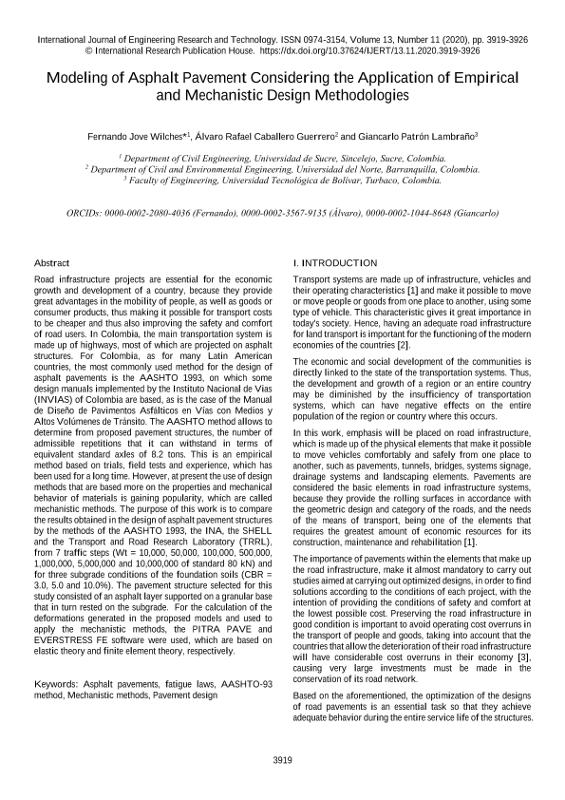Abstract
Road infrastructure projects are essential for the economic growth and development of a country, because they provide great advantages in the mobility of people, as well as goods or consumer products, thus making it possible for transport costs to be cheaper and thus also improving the safety and comfort of road users. In Colombia, the main transportation system is made up of highways, most of which are projected on asphalt structures. For Colombia, as for many Latin American countries, the most commonly used method for the design of asphalt pavements is the AASHTO 1993, on which some design manuals implemented by the Instituto Nacional de Vias (INVIAS) of Colombia are based, as is the case of the Manual de Diseño de Pavimentos Asfálticos en Vías con Medios y Altos Volúmenes de Tránsito. The AASHTO method allows to determine from proposed pavement structures, the number of admissible repetitions that it can withstand in terms of equivalent standard axles of 8.2 tons. This is an empirical method based on trials, field tests and experience, which has been used for a long time. However, at present the use of design methods that are based more on the properties and mechanical behavior of materials is gaining popularity, which are called mechanistic methods. The purpose of this work is to compare the results obtained in the design of asphalt pavement structures by the methods of the AASHTO 1993, the INA, the SHELL and the Transport and Road Research Laboratory (TRRL), from 7 traffic steps (Wt = 10,000, 50,000, 100,000, 500,000, 1,000,000, 5,000,000 and 10,000,000 of standard 80 kN) and for three subgrade conditions of the foundation soils (CBR = 3.0, 5.0 and 10.0%). The pavement structure selected for this study consisted of an asphalt layer supported on a granular base that in turn rested on the subgrade. For the calculation of the deformations generated in the proposed models and used to apply the mechanistic methods, the PITRA PAVE and EVERSTRESS FE software were used, which are based on elastic theory and finite element theory, respectively.














